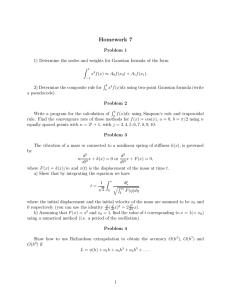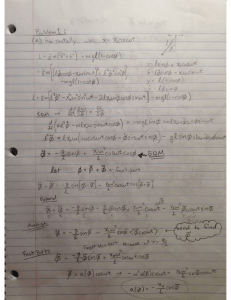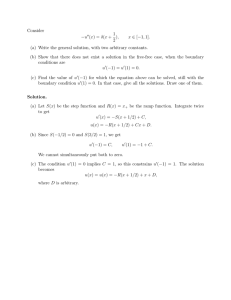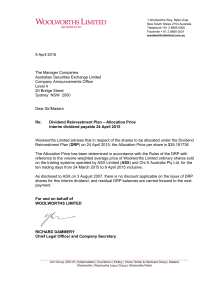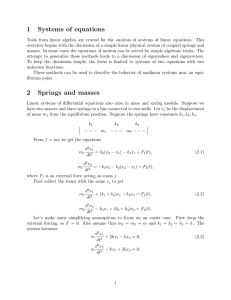Differential Equations Final Exam Review - MATH 2070
advertisement
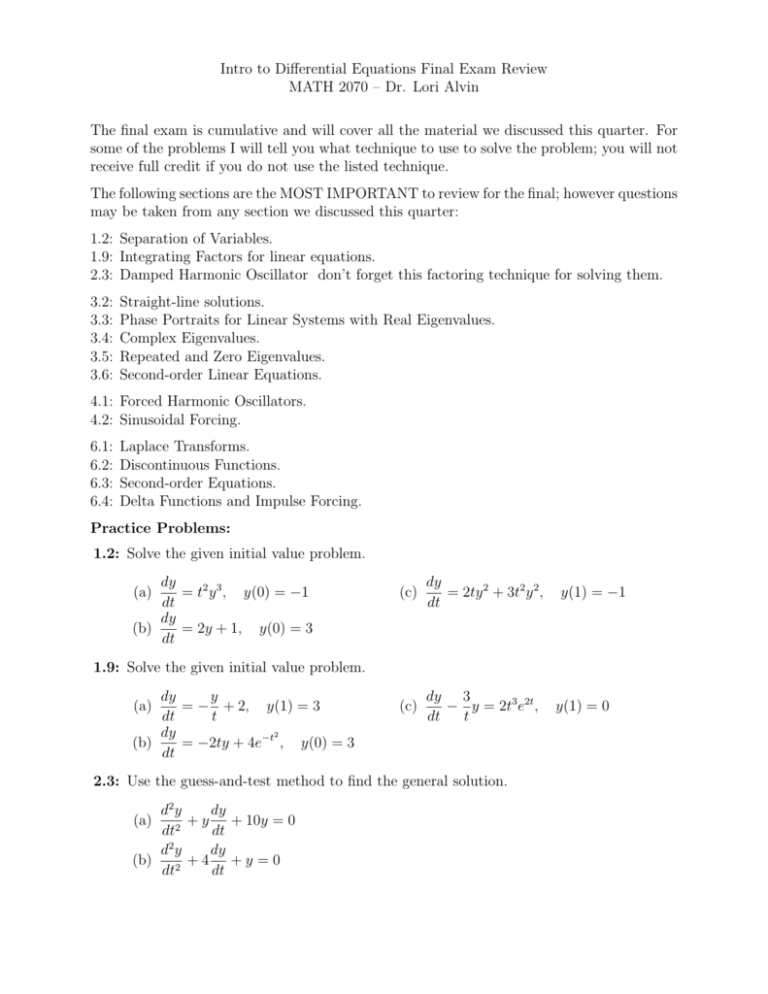
Intro to Differential Equations Final Exam Review MATH 2070 – Dr. Lori Alvin The final exam is cumulative and will cover all the material we discussed this quarter. For some of the problems I will tell you what technique to use to solve the problem; you will not receive full credit if you do not use the listed technique. The following sections are the MOST IMPORTANT to review for the final; however questions may be taken from any section we discussed this quarter: 1.2: Separation of Variables. 1.9: Integrating Factors for linear equations. 2.3: Damped Harmonic Oscillator don’t forget this factoring technique for solving them. 3.2: 3.3: 3.4: 3.5: 3.6: Straight-line solutions. Phase Portraits for Linear Systems with Real Eigenvalues. Complex Eigenvalues. Repeated and Zero Eigenvalues. Second-order Linear Equations. 4.1: Forced Harmonic Oscillators. 4.2: Sinusoidal Forcing. 6.1: 6.2: 6.3: 6.4: Laplace Transforms. Discontinuous Functions. Second-order Equations. Delta Functions and Impulse Forcing. Practice Problems: 1.2: Solve the given initial value problem. dy = t2 y 3 , y(0) = −1 dt dy (b) = 2y + 1, y(0) = 3 dt (a) (c) dy = 2ty 2 + 3t2 y 2 , dt (c) dy 3 − y = 2t3 e2t , dt t y(1) = −1 1.9: Solve the given initial value problem. dy y = − + 2, y(1) = 3 dt t dy 2 (b) = −2ty + 4e−t , y(0) = 3 dt (a) 2.3: Use the guess-and-test method to find the general solution. d2 y dy + y + 10y = 0 2 dt dt 2 dy dy +4 +y =0 (b) 2 dt dt (a) y(1) = 0 3.2/3.3: Compute the general solution and sketch the phase portrait. dx dy dY −5 −2 (a) = 5x + 4y, = 9x (b) = Y −1 −4 dt dt dt 3.4: Solve the initial value problem, determine the type of the system (center, spiral sink, spiral source), determine the direction of oscillations in the phase plane. dY dY −3 −5 0 2 (a) = Y, Y (0) = (4, 0) (c) = Y, Y (0) = (1, 0) 3 1 −2 0 dt dt dY 1 4 (b) = Y, Y (0) = (1, −1) −3 2 dt 3.5: Solve the initial value problem and sketch the phase plane. dY dY −3 0 0 −2 (a) = Y, Y (0) = (1, 0) (c) = Y, 1 −3 0 0 dt dt dY 2 4 = Y, Y (0) = (1, 0) (b) 3 6 dt Y (0) = (1, 1) 3.6: Write the corresponding first order system, find the eigenvalues, classify the oscillator, determine the direction of oscillation (if applicable). dy d2 y +3 +y =0 2 dt dt 2 dy dy (b) 9 2 + 6 + y = 0 dt dt (a) 2 d2 y dy + + 3y = 0 dt2 dt d2 y dy (d) + 6 + 8y = 0 2 dt dt (c) 2 4.1/4.2: Solve the initial value problem for y(0) = y 0 (0) = 0 d2 y dt2 d2 y (b) dt2 d2 y (c) dt2 d2 y (d) dt2 (a) +4 dy + 3y = e−4t dt + 9y = e−t + 4y = −3 +6 dy + 8y = 2 dt d2 y dt2 d2 y (f) dt2 d2 y (g) dt2 d2 y (h) dt2 (e) dy + 20y = −3 sin(2t) dt dy + 4 + 20y = − cos(5t) dt dy + 6 + 8y = −4 cos(3t) dt +4 + 4y = 3 sin(2t) 6.1 /6.2: Solve the initial value problem. dy dy (c) = −y + 2u3 (t), y(0) = 4 = u2 (t), y(0) = 3 dt dt dy dy (b) = −y + u1 (t)(t − 1), y(0) = 2 (d) + 9y = 2, y(0) = −2 dt dt (a) 6.3: Repeat the problems from 4.1/4.2 using Laplace transforms. d2 y dy + 2 + 5y = δ3 (t), y(0) = 1, y 0 (0) = 1 2 dt dt d2 y dy (b) + 2 + 2y = −2δ2 (t), y(0) = 2, y 0 (0) = 0 dt2 dt 2 dy (c) + 3y = 5δ2 (t), y(0) = 0, y 0 (0) = 0 2 dt 6.4: (a)
